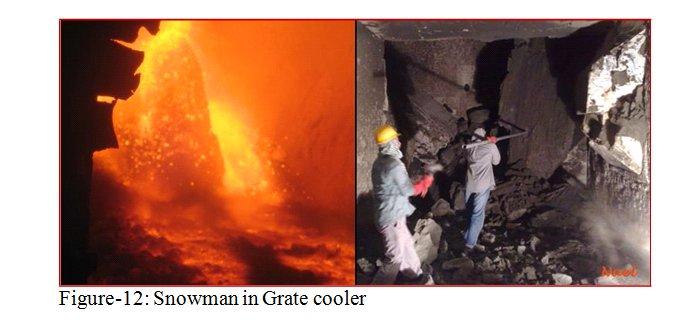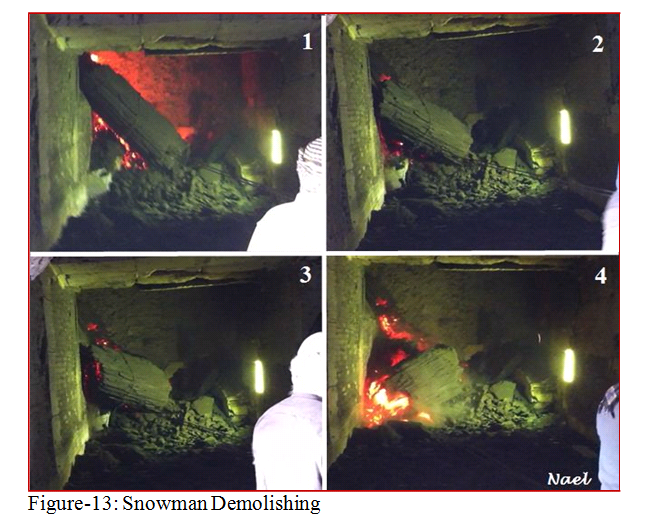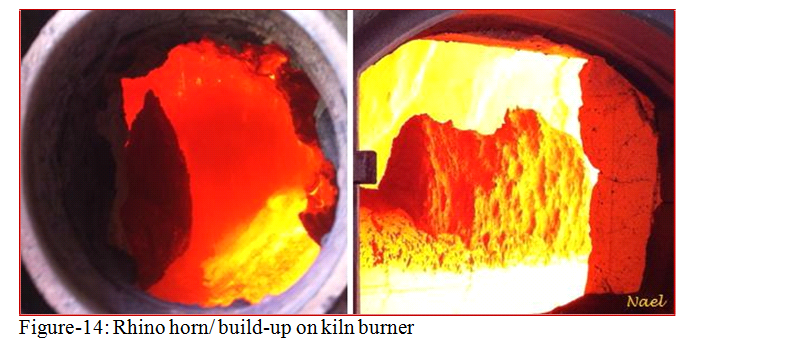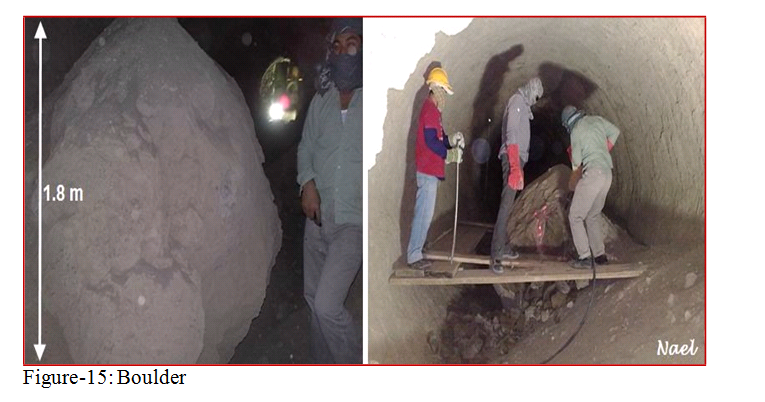Contents
click here to Download the Most Important 13 Books in Cement Industry
click here to Download the Most Important 13 Books in Cement Industry
What is the formation mechanism of “Snowman”, “Rhino horn”, and “Boulder” in kiln system?
By: Nael Shabana qatar.cement@yahoo.com
The first two deposits are formed from small clinker nodules and clinker dust particles. Their chemical and mineralogical composition is identical to clinker, but in some cases enrichment up to 3.5% K20 and 3.0% S03 has been noticed.
a). Snowman: Is a formation of large build-up on cooler first grate (static grate) or kiln discharge wall where the clinker falls from the kiln. Snowman (figure-
12) may eventually grow to reach the mouth of the kiln, thereby blocking the discharge of clinker from the kiln. Snowman causes poor clinker distribution thereby poor heat exchange between clinker and secondary air. Snowman formation mechanism may divide to two:
1). Freezes of the clinker liquid phase as the clinker passes through the first cooling zone in the rotary kiln or on falling down the chute into the grate cooler. The clinker dust particles carried back by the secondary air stream from the clinker bed grate into the interior of the rotary kiln also play an important role on formation snowmen. The clinker dust particles, having a superficial liquid phase layer, strike against the chute wall and the refractory lining at
discharge side of the rotary kiln, lose their kinetic energy and the superficial liquid phase freezes immediately.
2). Occasionally large lumps of coating discharge from the kiln, these lumps of kiln coating act as “seeds” for the formation of snowmen. Snowmen form when fines fall from the kiln above, onto the top surfaces of these lumps on top of the clinker bed within the cooler. As layer after layer of the fines fuse onto the lump, snowmen “grow” upwardly into stalagmite-like structures. Figure-13 is showing snowman demolishing by “Pulling method”.


b). Rhino horn: is a build-up on the top of kiln burner pipe as shown in the figure-14.
Rhino horn formation mechanism: Clinker dust carried back to the kiln with the secondary combustion air loses velocity around the burner and that causes clinker dust to settle and build up on the top of the burner.

c). Boulder: Generally, clinker ball/ boulder formation is related to low clinker SM with high AM or related to very thick coating. Figure-15 is showing a boulder with 1.80 m in diameter.
Boulder formation mechanism: Large clinker balls initiate and grow behind a thick coating or ring. Build up often fall and slide into the kiln as large slabs and coming to rest behind a ring (if it is large enough). The slab can roll around behind the ring forming a ball which can then grow larger due to accretion.

Snowman formation due to 1_ high Fe2O3. 2_clinker is dusty. 3_ HIgh SM lead to removing of coating and it is dropped and dusty ck is formed above it formation snowman